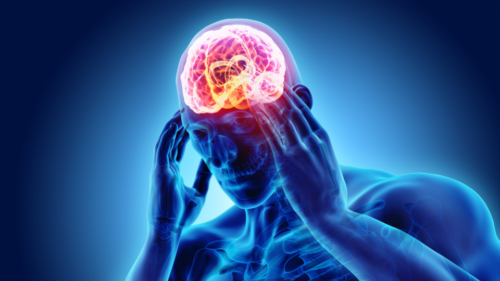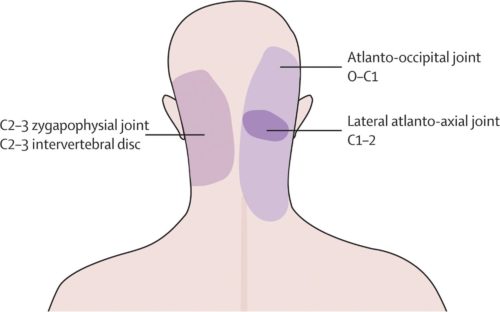Headache

Headache is a common and debilitating persistent pain syndrome affecting many members of the community. There are many potential causes, and careful assessment is required to rule out serious and treatable conditions. Some benign, but disabling headache syndromes that can respond well to pain interventions are:
 Cervicogenic Headache
Cervicogenic Headache
This syndrome is characterised by pain in the upper neck, base of skull to the back of the scalp, shoulder and upper arm. Patients can experience visual and auditory changes and sensitivity of the skin in extreme cases.
Pain is worse with activity and position changes, and can be identified as originating from facet joint arthropathy of the upper cervical spine. Treatment of the cervical spinal facet joints or the C1-2 joint can substantially improve cervicogenic headache.
Migraine Headache
This is typically episodic severe headache associated with aura, nausea/vomiting and sensitivity to light. Patients often experience episodes form their early teens, but hormonal changes or stressful events can lead to an increase in attack frequency. If attacks are of high frequency, the migraine can become so consistent that it is better defined as Chronic Daily Headache.
Neuromodulation or Occipital Nerve Stimulation shows promising results in the treatment of intractable migraine. Sometimes, more than one problem is contributing to a patient’s experience of headache. Careful assessment and stepwise investigation by your Pain Medicine Specialist is the key to thorough diagnosis and optimal pain management.
Video courtesy of YouTube
Learn more
- Educational video: Headache
- Download our brochure about Understanding Chronic Pain here
- Migraine and Headache Australia
- Identifying headache triggers
- Keeping track with a Headache Diary
- Learning about treatment options
- The Australian Migraine Documentary
- Prevention Strategies & Treatment For Migraine & Headache educational video